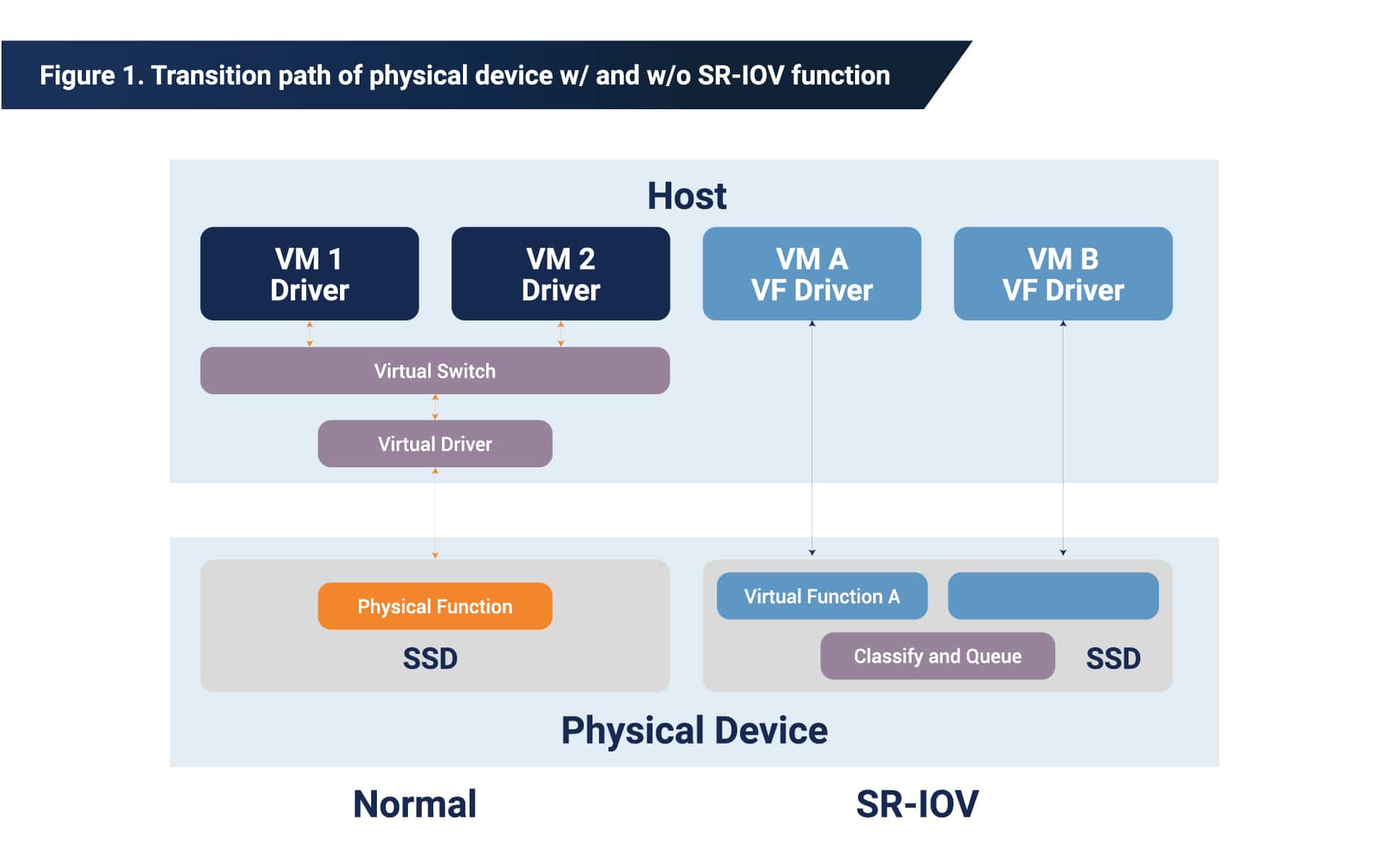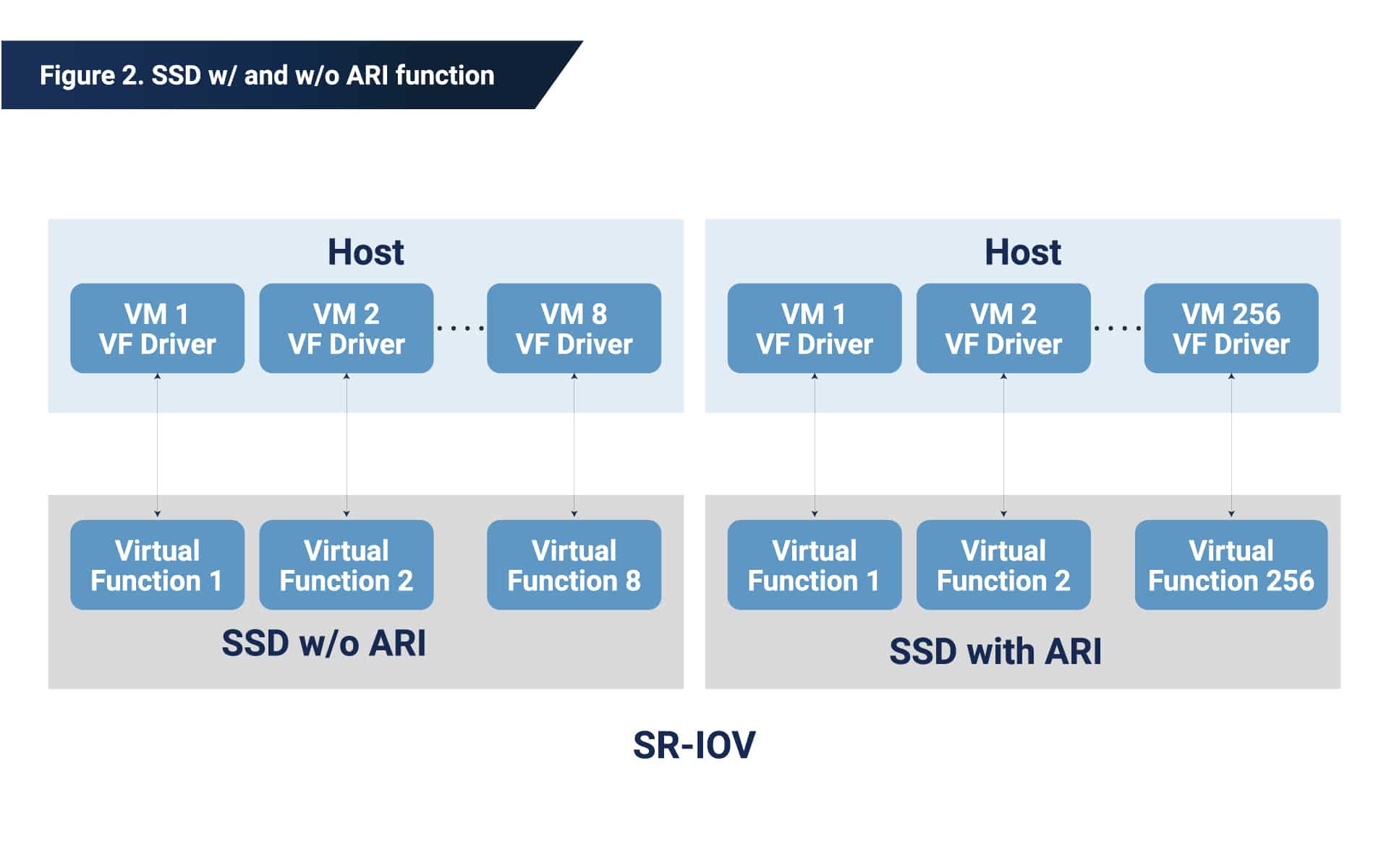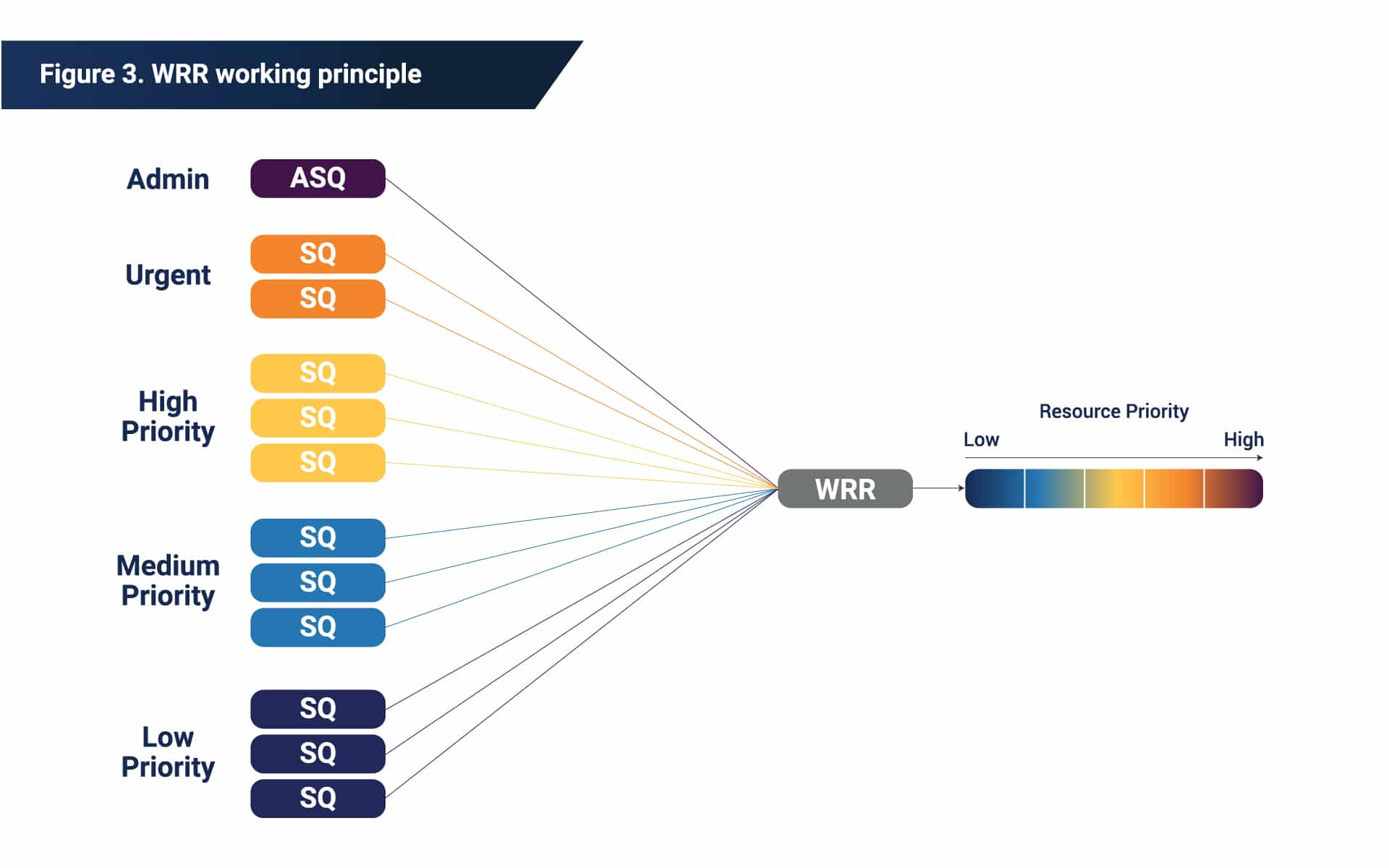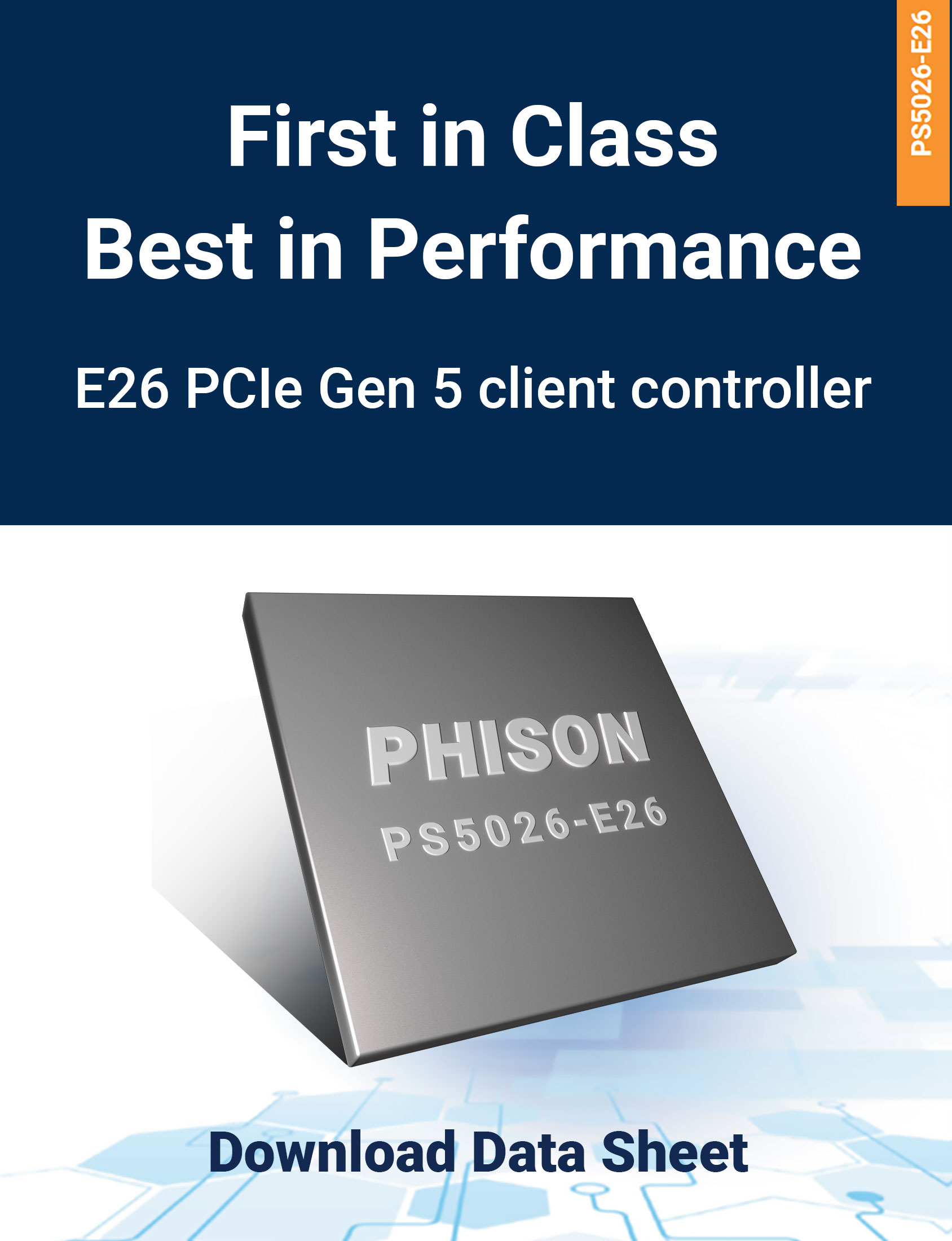There is a lot of need for new requirements regarding data collection, analysis, and large data storage. This need has arisen from the development of various industries such as 5G applications, autonomous cars, big data, and Artificial Intelligence (AI). We can expect that the data volume requirement will raise at least 5 times from CY2018 to CY2025.
This rise in data volume requires storage devices to handle large amounts of data with the shortest latency possible. Providing high-quality service to support multiple functions with one drive has become a hot topic in recent years.
An important indicator to evaluate the performance of Enterprise SSD is Quality of Service (QoS). Single Root I/O Virtualization (SR-IOV) is a commonly used application by the good QoS of enterprise SSD. Generally, the host will implement a virtual switch mechanism to divide the data resource to each virtual machine, which will cause transition latency and impact the QoS. One way to combat this is to apply SR-IOV to physical devices. This will allow the dedication of bandwidth for each virtual machine without getting through the virtual switch, resulting in less latency with better QoS.
What is Single Root Input / Output Virtualization (SR-IOV)?
Concept
- Assigns I/O hardware directly to virtual machines without getting through virtual machine manager
- Allows the dedication of bandwidth (QoS) for virtual machines and associated applications
Benefit
- Enable high I/O performance in virtualized environment
- Conserves PCIe slots in server environment
Additional considerations for implementing SR-IOV
Alternative Routing ID Interpretation (ARI)
- Increase the virtual function number from 8 to 256
Weighted Round Robin (WRR)
- Classified SQ by workload
- Resource allocation
- Priority: Admin → Urgent → High → Medium → Low
How does Phison come into play?
Phison has embedded MF SR-IOV solution in ASICs which allows a single SSD to support various workloads and provides equal independent high-quality service for multiple users. This allows network service providers to service more users with the same amount of SSD to increase their competitiveness. Phison has cooperated with the first-tier companies and devoted time and effort for over 3 years and looks to continue to grow in the future.
Frequently Asked Questions (FAQ) :
How does SR-IOV enhance SSD performance in virtualized environments?
SR-IOV bypasses the virtual switch layer by assigning I/O resources directly to virtual machines, reducing latency and boosting I/O throughput. This direct path ensures predictable, high-quality service across VMs.
What is Alternative Routing ID Interpretation (ARI), and why is it important?
ARI extends the number of virtual functions per device from 8 to 256, critical for scaling virtual environments. This enables more users or applications to access dedicated bandwidth on a single SSD.
How does Phison’s MF SR-IOV differ from traditional SR-IOV solutions?
Phison embeds MF SR-IOV directly in its ASICs, enabling one SSD to support diverse, concurrent workloads with consistent QoS. This eliminates reliance on software-based resource allocation and reduces overhead.
What are the practical benefits for service providers using Phison's MF SR-IOV?
Providers can serve more users without increasing hardware, maximizing SSD utilization and reducing total cost of ownership. It’s particularly valuable in data centers and edge computing environments.
Can Phison’s MF SR-IOV solution conserve hardware resources like PCIe slots?
Yes. By virtualizing I/O functions within the SSD and reducing the need for additional hardware interfaces, MF SR-IOV conserves PCIe slots—critical in dense server environments.













